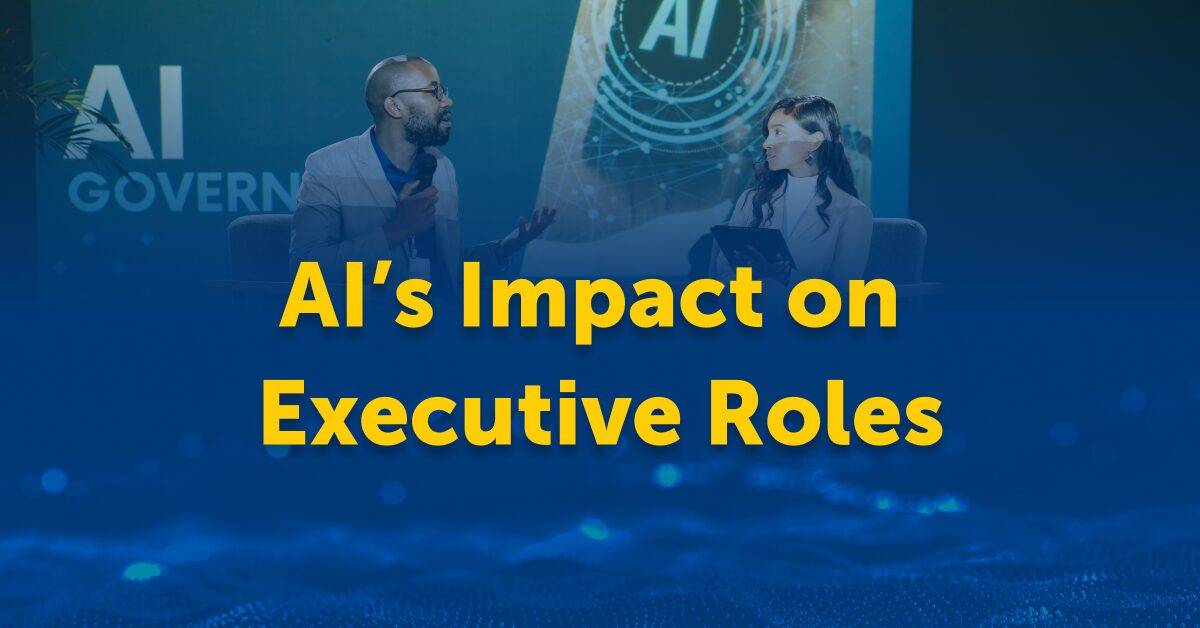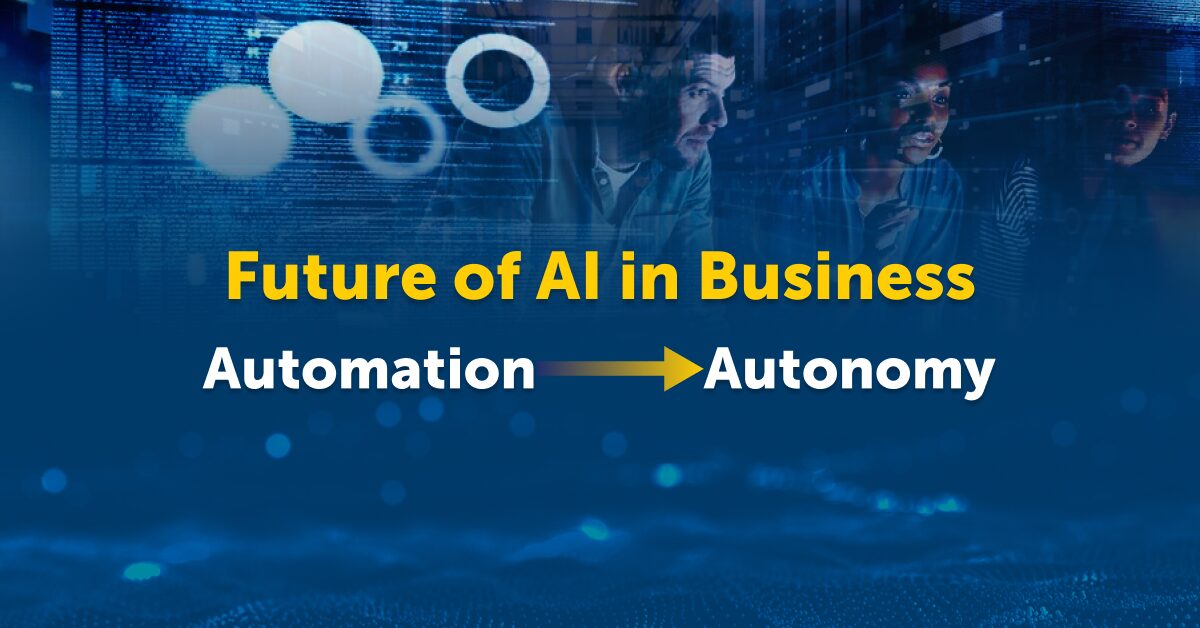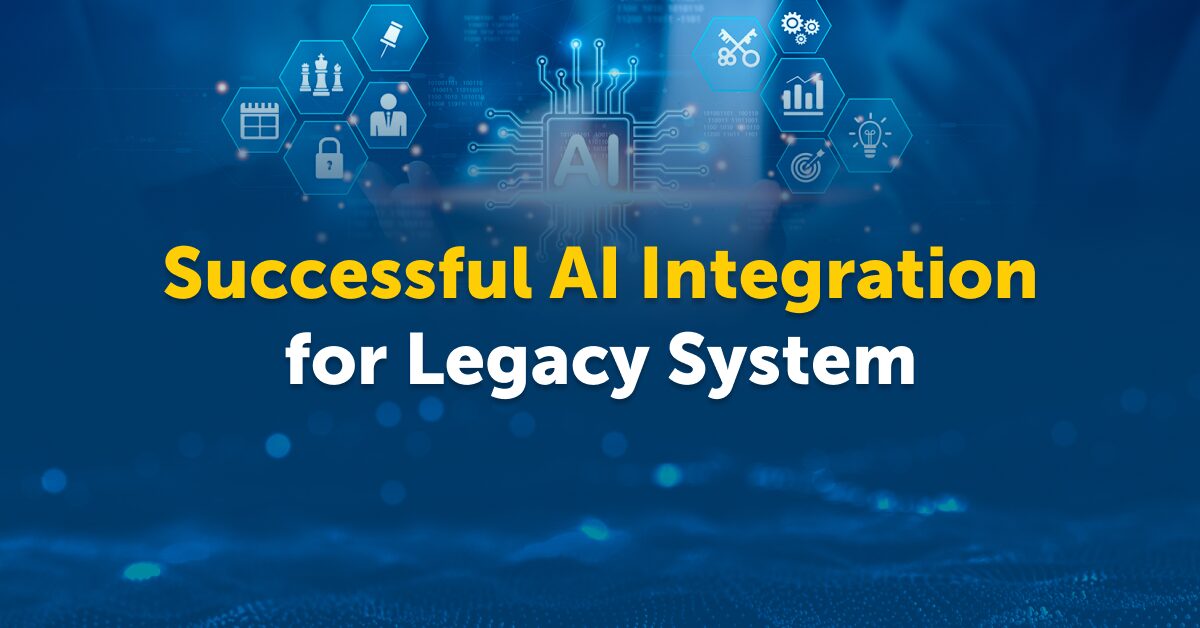How AI is Redefining the Role of the C-suite in Modern Business

For decades, C-suite roles evolved at a measured pace, shaped by market cycles, mergers, and the occasional disruptive innovation. That pace has now accelerated. Artificial intelligence is transforming the business landscape, compressing transformation timelines that once took years into months and reshaping the very nature of executive leadership.
From retail boardrooms to manufacturing floors, from banks to healthcare systems, AI is moving from a support function to a primary driver of corporate strategy. This is not about following a technology trend; it is about sustaining competitiveness, protecting shareholder value, and ensuring resilience in rapidly changing markets.
Leaders now face a pivotal choice: redefine their roles for an AI-first reality or risk being surpassed by competitors who already have. The transformation is reshaping decision-making frameworks, shifting priorities, and requiring unprecedented collaboration across the C-suite.

Want guidance from an AI expert on how to implement AI in your business? Contact Fusemachines today!
Why AI is Forcing a Leadership Shift
AI adoption is not a simple technology upgrade. It represents a structural change in how organizations operate, innovate, and compete.
Three forces are driving this shift:
- Data abundance
Enterprises are generating vast volumes of structured and unstructured data. The ability to translate this into actionable intelligence is now a critical leadership capability. - Automation at scale
AI enables significant efficiency gains by automating complex processes, reducing costs, and improving accuracy without proportional increases in resources. - Evolving customer expectations
Personalization, rapid delivery, and 24/7 availability have become standard. Meeting these expectations requires AI capabilities embedded across functions and led from the top.
On top of these forces, competitive pressure is intensifying. In many industries, AI adoption is creating first-mover advantages that are difficult to close. Leaders must act decisively to avoid being left behind in markets where speed, personalization, and adaptability determine success.
Regulatory demands are also shaping executive priorities. Governments are introducing AI-related compliance requirements on transparency, bias mitigation, and data privacy. Executives must balance innovation with adherence to emerging rules, recognizing that missteps could lead to reputational damage and legal penalties.
In the modern enterprise, business strategy and technology strategy are inseparable. Every executive must be fluent in AI’s opportunities, risks, and operational implications.
The CEO: From Visionary to AI-First Strategist
The CEO’s role now extends beyond defining vision and corporate culture. In the AI era, the CEO must act as the architect of transformation.
Key responsibilities include:
- Setting a clear AI vision that aligns with the organization’s strategic objectives.
- Communicating AI’s value to the board, investors, regulators, and employees.
- Fostering an AI-ready culture that supports responsible experimentation.
- Ensuring that AI adoption aligns with corporate values and societal expectations.
In retail, a CEO might lead the adoption of AI-powered demand forecasting to optimize inventory, while guiding marketing teams to leverage AI for personalized promotions without crossing privacy boundaries. In healthcare, a CEO could drive AI initiatives for early diagnostics, ensuring they meet patient safety and compliance requirements while accelerating innovation.
The CFO: From Financial Steward to AI Value Architect
The CFO’s role is evolving from safeguarding financial health to enabling AI-driven growth and value creation.
AI allows CFOs to:
- Apply predictive analytics for more accurate forecasting and budgeting.
- Use scenario modeling to evaluate risk and identify opportunities.
- Measure and communicate AI ROI to guide investment priorities.
In banking, a CFO may oversee AI-based risk assessment models that improve lending decisions while complying with regulatory capital requirements. In manufacturing, CFOs can leverage AI to predict commodity price fluctuations, enabling smarter procurement strategies that reduce costs and improve margins.
By integrating AI into financial governance, CFOs become both protectors of profitability and champions of innovation.
The COO: From Process Optimization to AI Transformation Leadership
COOs are shifting from overseeing operational efficiency to leading enterprise-wide AI transformation.
AI supports COOs by enabling them to:
- Optimize supply chains through predictive logistics and inventory management.
- Improve service delivery with intelligent automation.
- Adapt quickly to disruptions using real-time operational analytics.
In logistics, a COO might implement AI-driven routing systems that reduce fuel consumption and improve delivery reliability. In hospitality, AI can help predict seasonal demand and optimize staffing levels, ensuring both customer satisfaction and cost efficiency. The modern COO’s success depends on their ability to align operational execution with AI-enabled strategic agility.
The CTO/CIO: From Tech Enabler to AI Ecosystem Builder
CTOs and CIOs are transitioning from managing infrastructure to creating AI ecosystems that underpin competitive advantage.
Responsibilities now include:
- Selecting AI platforms and tools that align with business objectives.
- Building secure and scalable data pipelines to support AI applications.
- Implementing governance frameworks to ensure compliance, fairness, and transparency.
In insurance, a CIO might deploy AI-powered claims processing systems to speed settlements while reducing fraud. In public sector organizations, CTOs can oversee AI-based citizen service platforms that improve responsiveness and reduce administrative costs. These leaders are now central to shaping both the technology roadmap and the organization’s market position.

Want guidance from an AI expert on how to implement AI in your business? Contact Fusemachines today!
The Emerging CAIO Role and Cross-C-suite Collaboration
The creation of the Chief AI Officer (CAIO) role underscores AI’s strategic importance. The CAIO is responsible for defining AI policies, identifying high-value initiatives, and ensuring consistent adoption across the organization.
Even without a formal CAIO, AI leadership councils are emerging, bringing together multiple executives to align strategy, share knowledge, and oversee governance. For example, a global logistics company may convene its CEO, CFO, COO, and CIO monthly with an AI council to evaluate progress on AI-driven routing, warehouse automation, and customer engagement initiatives.
Effective AI leadership requires cross-C-suite collaboration. Siloed efforts fail to unlock the full value of AI; integrated strategies deliver far greater impact.
Industry Impact Across Key Sectors
While AI’s influence on leadership roles is universal, its applications differ across industries, shaping both strategic priorities and operational execution.
- Retail: Demand forecasting, customer segmentation, and personalized marketing are already standard AI applications. Advanced analytics allow retailers to optimize inventory at a granular level, reducing overstock and stockouts. AI-driven recommendation engines can also boost basket size while enhancing the customer experience through targeted promotions
- Finance: Credit scoring, fraud detection, and AI-driven risk modeling help financial institutions operate more efficiently and securely. AI enhances compliance monitoring by detecting irregularities in transactions and supporting real-time reporting to regulators. Leaders in finance can leverage AI for scenario simulations to stress-test portfolios against market volatility.
- Manufacturing: Predictive maintenance, automated quality control, and supply chain optimization reduce downtime and improve efficiency. AI-powered production scheduling helps manufacturers adapt quickly to demand shifts, while computer vision systems maintain high product quality standards without increasing labor costs.
- Healthcare: AI-assisted diagnostics, patient outcome prediction, and workflow automation improve care delivery and operational efficiency. Natural language processing can summarize complex medical records for clinicians, while AI triage systems help prioritize patient cases, reducing wait times and improving patient satisfaction.
- Technology: AI supports everything from software development automation to advanced cybersecurity threat detection. Tech leaders are also using AI to speed product development cycles, optimize cloud infrastructure usage, and personalize digital services for enterprise and consumer clients. AI-driven analytics can help technology companies anticipate market shifts and customer needs ahead of competitors.
- Real Estate: AI enables intelligent property valuation, demand forecasting, and targeted marketing for buyers and tenants. In commercial real estate, AI-powered analytics can assess portfolio performance, optimize lease terms, and forecast occupancy trends. Virtual property tours, powered by AI-enhanced visualization, are changing how prospective buyers and tenants experience listings, increasing conversion rates.
Common Pitfalls C-suite Leaders Must Avoid in AI Adoption
While AI offers significant potential, many leadership teams stumble in ways that undermine results and slow adoption. Avoiding these pitfalls is essential to maximizing ROI and building sustainable AI capability.
1. Treating AI as a One-off Project
AI is not a single implementation with a fixed endpoint. It is an evolving capability that requires ongoing refinement, retraining of models, and adaptation to new data and market conditions. Leaders who approach AI as a “check-the-box” initiative risk creating tools that quickly become outdated or irrelevant.
2. Focusing Solely on Technology Over Business Value
Some executives prioritize acquiring the most advanced AI systems without aligning them to strategic objectives. Technology without a clear business use case leads to wasted investments and low adoption. Every AI initiative should begin with a well-defined business problem and measurable success criteria.
3. Ignoring Change Management and Culture
Even the most sophisticated AI will fail if the workforce resists adoption. C-suite leaders must actively manage change by communicating benefits, addressing concerns about job displacement, and promoting a culture of data-driven decision-making.
4. Overlooking Data Governance and Compliance
Poor data quality, privacy violations, or regulatory non-compliance can derail AI initiatives and damage reputation. Strong governance practices, transparency in AI decision-making, and alignment with emerging AI regulations must be non-negotiable.
5. Underestimating the Need for Cross-Functional Collaboration
AI projects that live in departmental silos rarely scale effectively. Leaders must ensure that finance, operations, technology, and other business units are aligned on goals, timelines, and integration plans.
6. Neglecting Measurement and ROI Tracking
Without continuous performance tracking, it is impossible to know whether AI is delivering value. Executives should mandate regular reviews of KPIs, costs, and benefits to adjust strategy as needed.
Avoiding these pitfalls not only accelerates AI adoption but also positions the organization to lead in markets where intelligent systems increasingly define competitive advantage.
Bottom Line: Leading in the AI-First Era
AI is reshaping the responsibilities of every C-suite role. CEOs, CFOs, COOs, CTOs, and CAIOs must all adapt to ensure their organizations remain competitive.
The leaders who will succeed are those who:
- Recognize AI as a strategic driver of growth.
- Foster collaboration across executive functions.
- Balance innovation with sound governance and risk management.
The question for decision makers is no longer whether AI will change their role, but how quickly they can adapt and lead with confidence in a business environment where AI defines the rules of competition.

Want guidance from an AI expert on how to implement AI in your business? Contact Fusemachines today!


